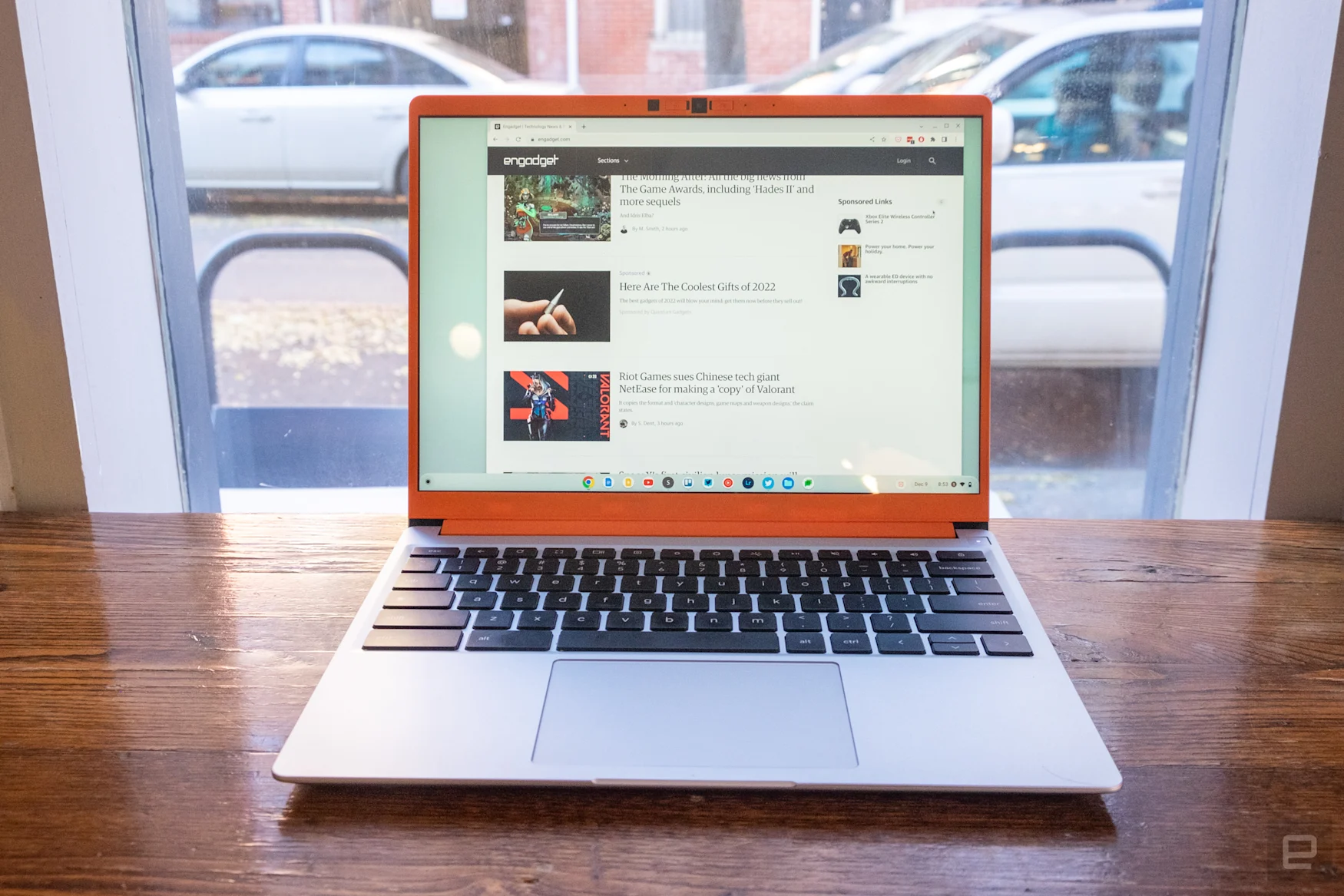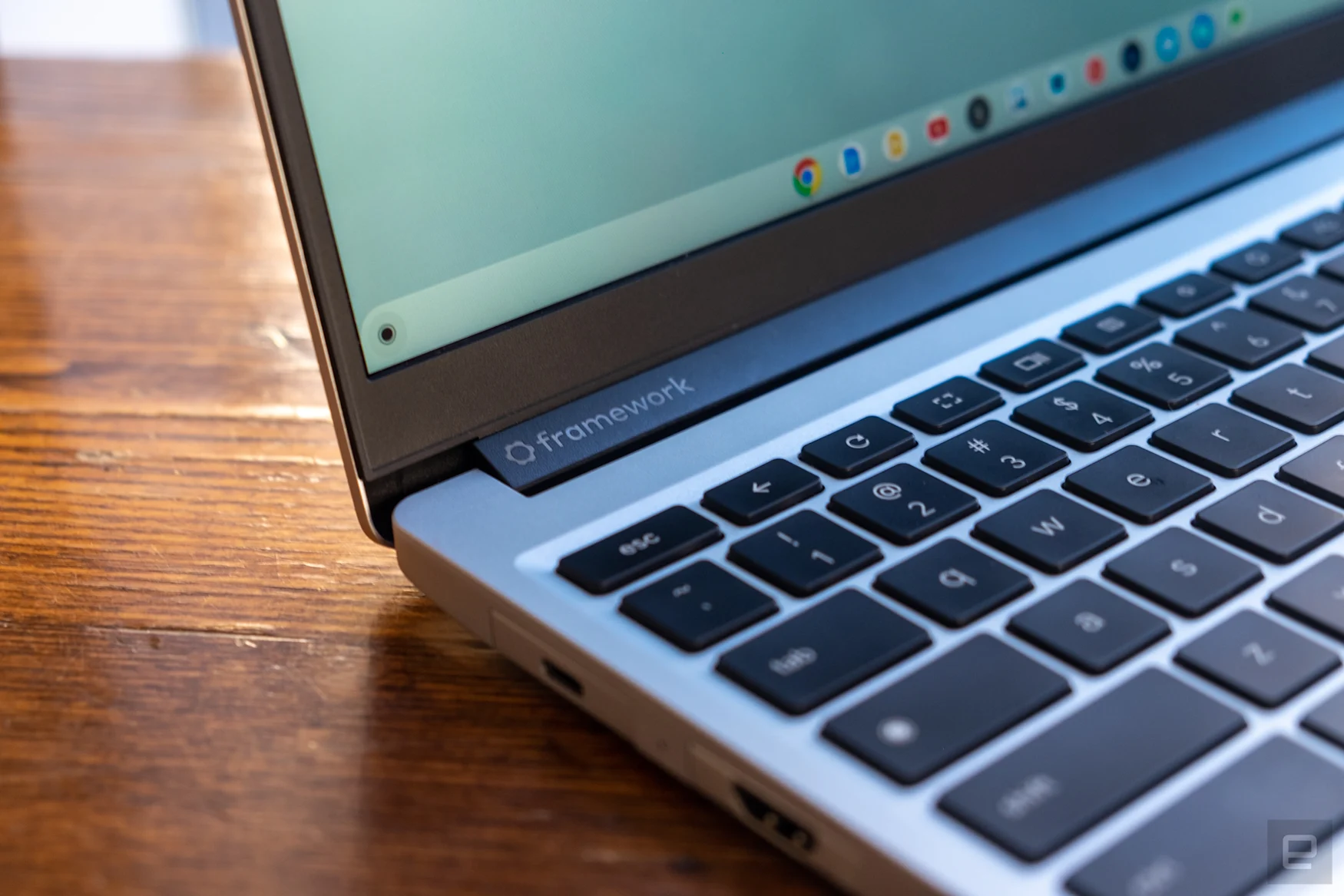Hear me out: The modular Framework Chromebook is worth the $1,000 (for some)
In a world where most laptops are entirely sealed, with no real way to tweak the hardware, Framework’s modular devices stand out. The company’s first Windows laptop was a solid computer considering the price – and that’s before you factor in the fact that you could swap ports, easily add more storage or RAM or even upgrade the processor down the line.
It’s been a little over a year since the first Framework laptops launched, and now the company has a new model, the Framework Laptop Chromebook Edition (which I’ll refer to as the Framework Chromebook from here on out). It offers the same benefits as its Windows sibling – namely, solid industrial design and specs coupled with the promise of customization and future expandability. That said, it’s also one of the more expensive Chromebooks available, starting at $999. That’s a lot of money for a Chromebook – but if it can last you five years or more, it might be worth the cost.
Pros
- Extremely easy to upgrade or repair
- Great screen and keyboard
- Powerful hardware
- Relatively thin and light design
Cons
- Pricey compared to other Chromebooks
- Visual design is a little dull
- Mediocre battery life
Hardware
Visually, the Framework Chromebook has little to distinguish it. That’s not necessarily a bad thing, but it is very utilitarian, with a silver aluminum chassis that resembles so many other devices out there. Still, it’s a pretty compact device, less than two-thirds of an inch thick and weighing under three pounds. A classy reflective Framework logo on the lid is the only thing distinguishing it from an Acer, ASUS and other brands’ laptops.
Gallery: Framework Laptop Chromebook Edition review photos | 20 Photos
Gallery: Framework Laptop Chromebook Edition review photos | 20 Photos
A day or two later, I discovered that the Framework Chromebook does have one bit of flair: the black bezel around the screen is magnetic and easily removable. Framework actually provided me with a fun orange option, which I left on. You can also get a silver bezel if you want, but orange is a personal favorite. I’m hoping the company adds a few more colors in the future as well.
Inside that bezel is a 1080p webcam that’s totally fine for video calling. Also of interest is the fact that there are hardware switches for disabling the camera and microphones. This isn’t just a software trick either; the switches actually cut the power to those modules, making it a fairly secure option (though a physical cover over the camera would be pretty impenetrable, too).

Nathan Ingraham / Engadget
While Framework devices are upgradeable, a few things are more permanent – namely, the display and keyboard. (You can replace both if they break, but there aren’t more advanced versions to upgrade your laptop with at this time. That could change, of course). Fortunately, both are excellent, as you’d hope for in a laptop at this price. The 13.5-inch display has a high resolution of 2,256 x 1,504, which translates to a taller 3:2 aspect ratio that I wish were more common.
The main downside is that it’s not a touchscreen, something you’ll find on most Chromebooks. That makes installing touch-driven Android apps less appealing, though at this point most of the apps I use (Lightroom, Todoist, Spotify and video apps like Netflix) work fine with a keyboard and mouse. That minor disappointment aside, the screen is great. Text and images are sharp, and its 400-nit max brightness is more than sufficient unless you have sunlight coming through and shining right on the display.

Nathan Ingraham / Engadget
As you’d expect, Framework swapped out the Windows keyboard layout for one that will feel familiar to Chromebook users, with the “everything” button on the left in place of caps lock and the function row shortcuts like back, refresh and screenshot right where I expected. There’s no Google Assistant key, but you can easily access the Assistant in the ChromeOS search bar if you’re so inclined. The keyboard itself is excellent; the backlit buttons have 1.5mm of travel and are solid and precise. The key caps are a bit small, but it didn’t take me long to adjust. I do wish that Framework included the fingerprint sensor found on its Windows laptop, though. Given that plenty of other Chromebooks support fingerprint unlocking, I’m surprised it isn’t available here.
At $999, the Framework Chromebook isn’t cheap, but the company didn’t spare any expense with the processor. It features Intel’s 12th-generation Core i5-1240P CPU, along with 8GB of RAM and 256GB of storage on the base model. Most Chromebooks with comparable specs are similarly priced, so Framework’s laptop isn’t excessively expensive – but the question, as always, is whether spending that much money on a ChromeOS device is a good idea at all.
For all the latest Technology News Click Here
For the latest news and updates, follow us on Google News.
